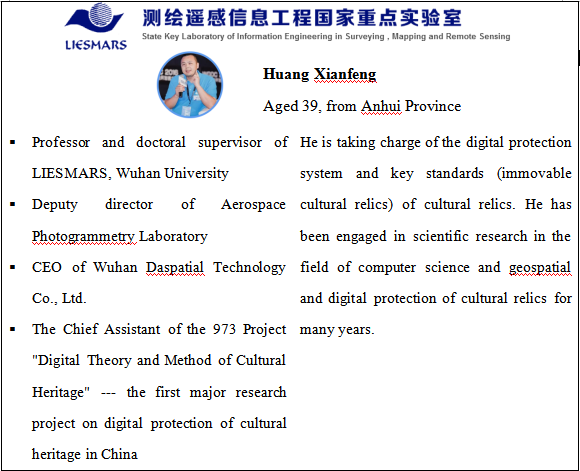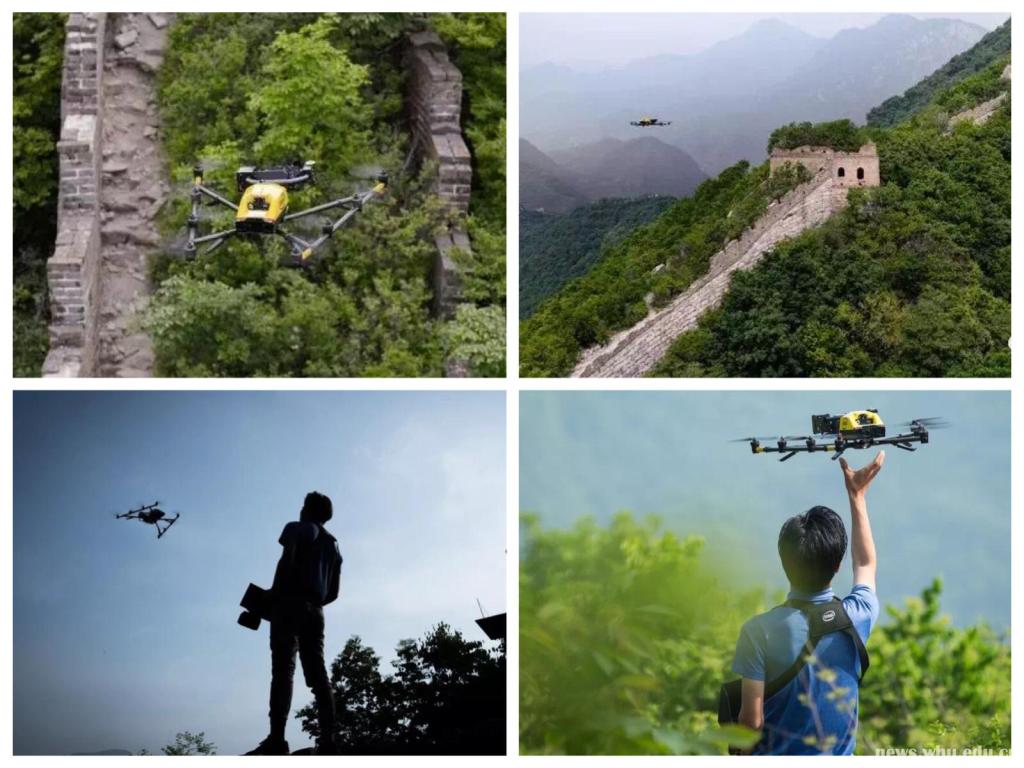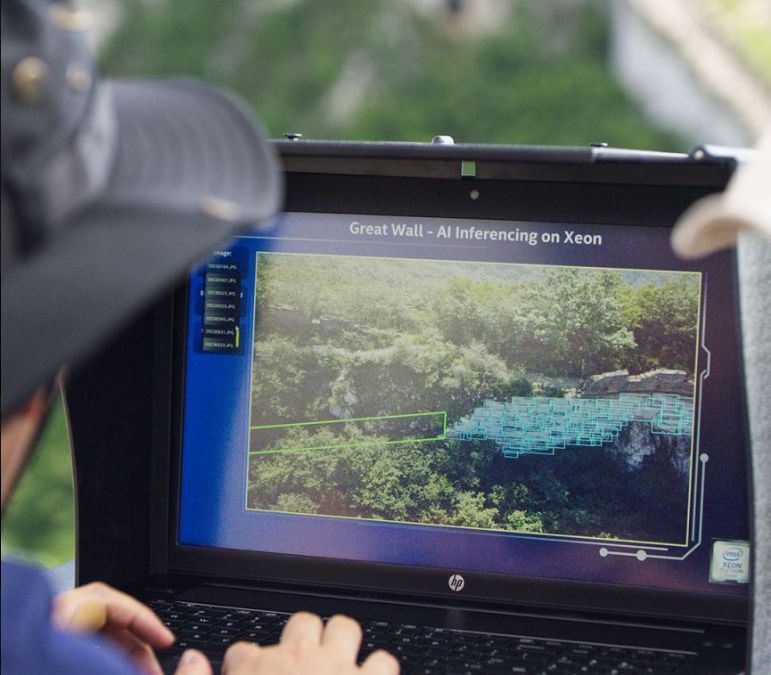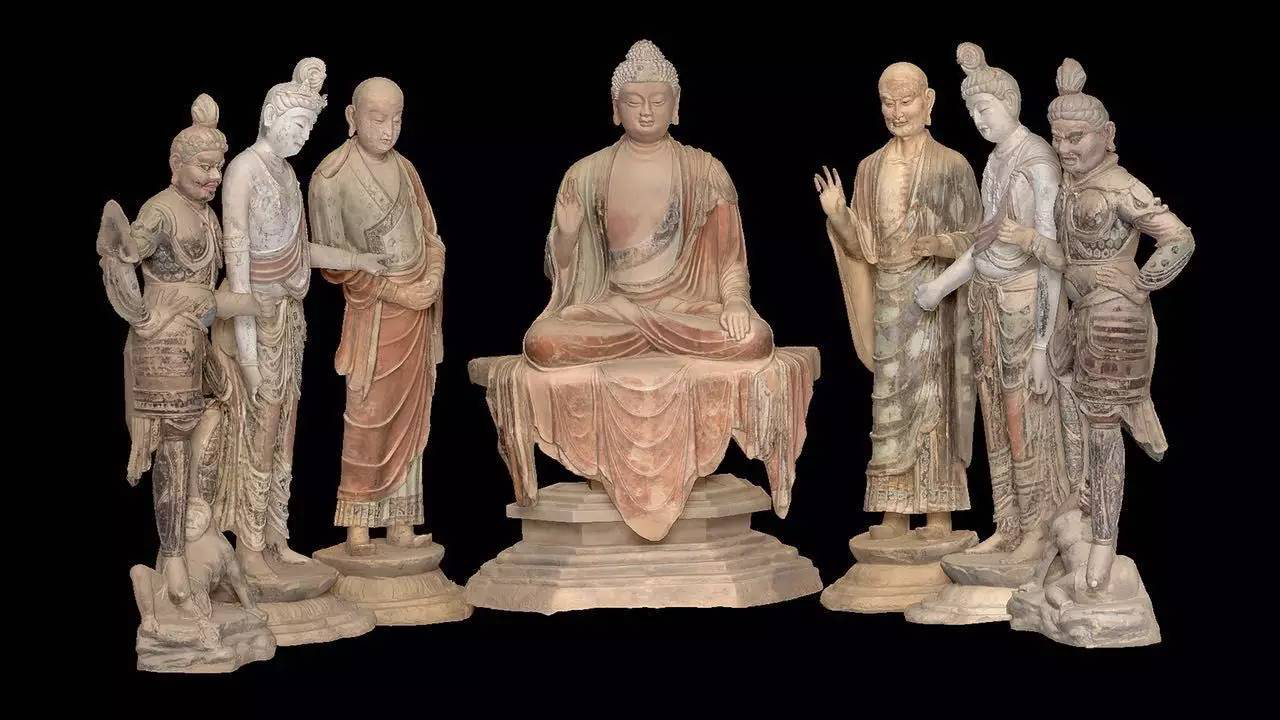As a monument recording China's thousands of year’s culture, the Great Wall, is not only the first military defense project in ancient China but also a remarkable cultural heritage of the world. It has nevertheless, suffered from natural disasters and artificial damage. Take the Jiankou Great Wall, one of the steepest sections, as an example. It is in need of urgent repair. But beforehand, precise detection must be conducted to position which section need repairing. This work could have been laborious but for high technologies. Thanks to the developing AI technology, now one effective method is to reconstruct 3D models of the Great Wall to detect before making repairs.
Modern science and technology are more and more frequently interacted with ancient civilization. Prof. Huang Xianfeng’s team from State Key Laboratory of Information Engineering in Surveying and Mapping and Remote Sensing (abbreviated LIESMARS), Wuhan University, associating with Intel Corporation and China Foundation for Cultural Heritage Conservation, put forward an innovative solution combining UAV (Unmanned Aerial Vehicles) oblique photogrammetry, 3D model reconstruction and AI (Artificial Intelligence) technologies to help repair the Great Wall.

Prof. Huang explained the three steps of the repairing process: firstly, to reconstruct 3D models of damaged sections with pictures taken by UAV; secondly, to calculate the extent of damage and simulate their original appearance via AI; thirdly, to list all the materials demanded in repair.
One of the most precipitous sections of the Great Wall is Jiankou Great Wall. It is famous for its W-shape, like a full-bow button arrow. However, centuries’ standing against wind and rains severely eroded part of its walls, beacon towers and stairs, which is in urgent need of repair.

3D Model Reconstruction by UAV
High-resolution aerial oblique images, captured by Intel's latest falcon 8+ UAV stably, are used to reconstruct accurate 3D models. Thousands of high-resolution images of the Jiankou Great Wall are returned to the workstation for analysis and further processing; the processed images are then used to reconstruct high-fidelity 3D models of the Jiankou Great Wall.


AI-aided Detection
In order to more accurately and efficiently make the repair, LIESMARS, cooperating with Intel, used deep learning network such as RNN (Recurrent Neural Network) and GAN (Generative Adversarial Networks) for detecting cracks and loss of bricks.

Prof. Huang points out that with the help of AI, engineers can calculate the exact size and quantity of needed materials collaborating with engineers to ensure the efficiency of the project.
Once participating the digitalizing of Mo Kao Grotto at Dunhuang
Prof. Huang recalls that he once engaged in digitalizing Mo Kao Grotto with his colleagues in 2009, when they had to depend on such heavy machines like Terrestrial Laser Scanner and Onboard Laser Scanner. Without UAV, they could only use a small-size aero plane to capturing images. It was also time consuming to analyze data manually at that time.

Painted sculptures of Mo Kao Grotto under 3D modeling
Making 3D modeling available to the general public
Prof. Huang mentioned that 3D modeling, which was the core of this project, could be also applied to other areas apart from cultural heritage protection. Such fields may include scientific research education, national defense and anti-terrorism, intelligent city and transportation and entertainment, etc. He said science and technology can develop well in higher education institutes; it can better serve our life once it is tested in a fully competitive market.
Actually, in 2014, Prof. Huang established Wuhan Daspatial Technology Co., Ltd. He led his doctoral students to explore 3D modeling that can be adopted in different fields. They worked really hard and sometimes they would even test an algorithm for a consecutive fortnight to improve the technology. Nowadays, they are the world pioneers in this area. This group also launched Online Get3D Modeling Platform, which can help people reconstruct a 3D model as long as they upload pictures in demand. For example, a professor from China University of Geosciences has got hundreds of 3D models of minerals, which can be applied to in-class teaching with the help of this platform.
As Prof. Huang stated, technology can only repair cultural relics but not civilization. This work is just a beginning of cultural heritage protection using AI by LIESMARS and Intel. Prof. Huang plans to set up a superb modeling center where people could establish a fantastic virtual world with their cameras.
(Source:http://ctdsb.cnhubei.com/html/ctdsb/20180831/ctdsb3275728.html)
Rewritten by Lu Xinqiang, edited by Zheng Lingling, Shen Yuxi and Hu Sijia